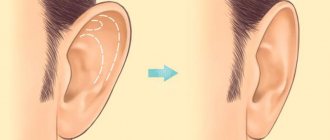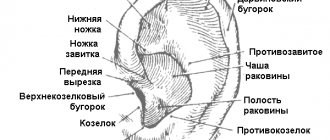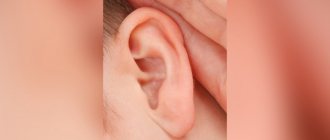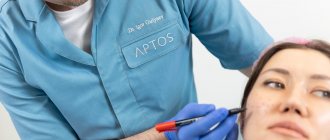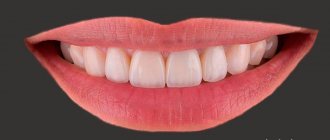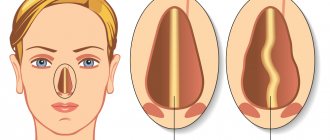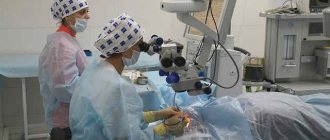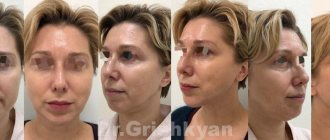Ear correction in medical nomenclature is called otoplasty . Successfully performed by Turkish surgeons. The procedure can be performed on children after 7 years of age, when the ear is fully developed. It consists of modeling and changing the appearance of the auricle in order to reduce the degree of its protrusion, because protruding ears do not decorate a person. The procedure usually takes 1.5–3 hours. The first cosmetic correction of protruding ears was performed in 1881.
Ear correction methods
Depending on the problems that need to be solved with the help of surgical intervention, there are several types of otoplasty:
- reconstructive;
- aesthetic.
It can be one-sided (on one ear) and, accordingly, two-sided. It is carried out using different methods:
- Using a scalpel. The most affordable. Characterized by a longer recovery process.
- Laser. Fast, painless, does not require long-term rehabilitation. It is characterized by high precision of incisions, without blood loss and the risk of infection and complications.
- Using radio waves. Among the advantages: cuts without blood, rapid healing. Today the method is in the experimental stage.
Types of otoplasty
Depending on the problems to be solved by plastic surgery on the ears, there are several types of otoplasty. We are talking about aesthetic and reconstructive operations.
Aesthetic otoplasty
This type of plastic surgery involves eliminating cosmetic imperfections. This category includes protruding ears, large pinnae, or asymmetrically placed ears. The indication for aesthetic plastic surgery is approximate compliance with generally accepted norm criteria.
So, the shape of the ears is considered normal if:
- the lowest point of the earlobe is at the same level as the lower part of the nose;
- the top point of the ear and the outer corner of the eye are on the same horizontal line;
- the length of the lobe is 2 cm or less;
- the angle between the plane of the ear and the body of the head should be no more than 30 degrees;
- The conchomastoid angle should be within 90 degrees.
Aesthetic otoplasty is considered for:
- underdevelopment of the antihelix;
- excessive development of ear cartilage tissue;
- protrusion of the fleshy part of the ear (lobe);
- existing excessively large ear.
All these factors are aesthetic defects and can be easily eliminated with otoplasty in childhood and adulthood.
Reconstructive otoplasty
This type of plastic surgery removes complex defects that arise from underdevelopment of the external part of the auditory organ, when it is injured or even completely absent. This list includes diseases such as macrotia, microtia, atony, lobe and helix deformities.
Reconstruction of the external body is a series of complex operations that involve the use of modern special correction methods. For example, to restore part of the ear, a piece of cartilage is cut from the rib and a transplant is grown on its basis. Subsequently, the skin adheres to it.
Depending on the method of execution, otoplasty is divided into 3 types:
- Scalpel. This type of operation is outdated today, so it is cheap. The scalpel method involves the use of a scalpel during surgery. It also implies a long rehabilitation period and risks of complications.
- Laser. This is a fairly popular way of performing the operation. Its advantage lies in the speed of the operation, short rehabilitation period, precision of incisions and bactericidal effect on tissue. Under the influence of the beam, the cartilage tissue softens and can be easily cut. Thanks to the laser beam, the incision lines are made smoothly, accurately and without blood loss. They heal quickly, and the risks of blood loss are minimized. The cost of such operations is higher than the price of scalpel operations, but the quality is worth it.
- Radio wave. This is a new and little-researched method of performing operations with a radio wave device. The cuts are made under the influence of radio waves. The accuracy of the incisions, low trauma, bloodlessness, rapid healing of wounds and the absence of traces of incisions attract patients and surgeons. Today, this method of surgery is at an experimental stage and is currently used only in a few clinics.
Indications
Protruding ears are a fairly common cosmetic defect, which is the source of many complexes. According to the International Society of Aesthetic Surgery, the procedure is one of the most common in the field of plastic surgery. Otoplasty is performed after the ear is completely formed.
Indications for ear surgery:
- underdeveloped antihelix;
- excessive development of cartilage tissue;
- protrusion of the lobe;
- the ear is too large;
- pronounced protruding ears;
- birth defects;
- absence of the auricle or its underdevelopment.
Basics of the surgical method of ear reduction
For modern reduction otoplasty techniques, several different methods are used, the use of which largely depends on the size of the ears, the age of the patient and the structure of the cartilage tissue. The main methods of plastic surgery are:
- excision of cartilage along the contour of the natural fold;
- wedge resection of cartilage;
- crescent-shaped excision of the ear cartilage under the helix;
- surgical removal of a small area of cartilage from the front of the outer ear.
The methods of surgical manipulation are chosen by the doctor, taking into account the individual characteristics of the auricle (it can be enlarged along the entire length or have a large lobe).
Stages of correction of protruding ears
how is ear surgery performed?
In case of protruding ears, the operation is performed in the following sequence:
- the doctor marks the tissue to be excised;
- administers local anesthesia;
- excises excess skin in the fold behind the concha;
- removes or displaces fragments of cartilage;
- fixes the cartilage in the desired position;
- applies cosmetic stitches;
- puts on a compression bandage.
Routine preoperative examinations should be performed 2 weeks before the procedure. In most cases, the operation is performed under local anesthesia. Exceptions are made for small patients under short-term intravenous anesthesia. Then a one-day stay in the institution is necessary. The bandage should be worn until the stitches are removed and then worn at night for 2-3 weeks.
Plastic surgery of the ears
Preparation for otoplasty
The most important part of preparing for otoplasty is good information and having realistic expectations regarding the outcome, possible risks and postoperative circumstances. It is important for the doctor and patient to reach an understanding regarding the degree of necessary correction of protruding ears.
Before otoplasty surgery
Before otoplasty surgery, you must undergo tests and undergo all necessary examinations. It is also advisable to take vitamins before otoplasty surgery and eat well, eating enough meat, fruits and vegetables. Two weeks before otoplasty and a week after, you should not take acetylsalicylic acid (aspirin, etc.), as it increases the risk of bleeding. After otoplasty, the patient is prescribed analgesics that do not affect the blood coagulation system. At least two weeks before otoplasty, smokers are advised to quit smoking altogether, or at least significantly reduce the amount of nicotine. Moderation in alcohol consumption before and after otoplasty surgery is recommended.
The evening or morning before otoplasty, you should thoroughly wash your hair and ears. If the operation will be performed under anesthesia, then on the day of the operation, 4 hours before otoplasty, you should not eat or drink.
Carrying out the operation
Otoplasty is usually performed on an outpatient basis and does not require the patient to be admitted to the hospital. The operation is performed under local anesthesia and usually lasts about an hour, although more complex procedures may take longer.
After otoplasty
At the end of the operation, a bandage is applied to the ears, and the patient goes home independently. The bandage is applied for a period of 1-2 days, and then for 3-5 weeks it is necessary to wear some kind of bandage or scarf at night to protect the ears from injury during sleep. In the early postoperative period, pain in the wound area is usually not significant, but on the first day after surgery the patient may experience pain, which can be relieved with painkillers. To prevent inflammatory complications after otoplasty, it is necessary to take antibacterial drugs.
After otoplasty, the ear area may feel numb and swollen, and there are usually quite noticeable bruises in the area of the operated ears. Bruising and swelling usually completely resolve within two weeks after otoplasty.
After otoplasty, hair can usually be washed on the 2nd day, but you must be very gentle with your ears. Also, starting from the 2nd day after otoplasty, after removing the bandage, it is necessary to put some kind of bandage or scarf on the ears before going to bed, for 3-5 weeks, in order to prevent ear injury during sleep. Usually, no stitches need to be removed after otoplasty, since the wounds are sutured with threads that dissolve on their own. Sports activities can usually be resumed no earlier than 3 weeks after otoplasty. 3 and 6 months after otoplasty, you must come to the clinic for an examination with a surgeon.
Most patients return to their daily activities the very next day after surgery. Children can return to school in a week.
Possible complications
After ear correction there is a risk of complications. Otoplasty is considered a safe procedure and side effects are extremely rare. One of them is numbness and thrombosis or swelling, sometimes there is a change in skin color.
Common complications also include asymmetry and poor wound healing, especially in people who have not quit smoking 2 weeks before the procedure. The ear is also one of the places where keloid can develop. This is an overgrown scar that feels hard and lumpy to the touch. The causes of keloids are not entirely clear. There are several methods of treating them, of which steroid injections and laser therapy are the most popular. Your doctor will tell you more about this.
After correction, there is also the possibility of a hematoma forming at the incision site, that is, in the back of the ear. In this case, it is necessary to pump out the accumulated blood and re-sew the skin.
The cartilage in the ear can become infected. Antibacterial therapy is carried out, and if it is ineffective, the final solution is surgery. Possible complications also include allergic reactions, cartilage necrosis and even ear recurrence. To avoid complications, it is important to follow all the surgeon’s instructions, quit smoking in advance, and choose a doctor you can trust.
Preparation stages
First of all, patients should consult a doctor who, after a thorough examination and examination of medical indications, will prescribe a number of necessary tests:
- General blood and urine analysis.
- Coagulogram (determines the time it takes for blood to clot and the duration of bleeding).
- Test for blood glucose levels.
- Electrocardiogram (ECG) with interpretation.
- Fluorography.
- Laboratory tests for HIV, hepatitis, syphilis (RW).
The patient is also informed in advance about possible complications and consequences that may arise after the operation. Reducing the size of the ears does not have a negative effect on hearing.
2 weeks before surgery, you must stop taking medications that prevent blood clotting.
Postoperative period
After surgical correction of the ears, a recovery period begins. To reduce discomfort, the patient takes painkillers. The bandage must be changed every day.
For several days after surgery, the ear canal becomes swollen, bruised, and painful to the touch. In addition to medications, pain and swelling can be reduced with cold compresses. After about 3 days you can wash your hair. Typically, an examination is performed 7 days after the procedure, and sutures are removed 10–14 days later.
Indications for ear reduction surgery
Most often, patients who are dissatisfied with their appearance and want to have beautiful ears and wear any hairstyle resort to surgical intervention.
Experts in the field of aesthetic surgery recommend reduction otoplasty for children starting from the age of 6 years. Doctors and child psychologists advise parents to consult a doctor for surgical correction of a child’s ears at an early age, so that he does not have time to form complexes due to aesthetic defects in appearance, which can cause ridicule from others.
Otoplasty pros and cons
Ear surgery for protruding ears produces an amazing effect, which is noticeable within 3 months after the procedure. The result must be assessed after complete completion of cartilage remodeling.
Changing the appearance of the ear has a positive effect on self-esteem, increases self-confidence and reduces inhibitions. This is especially important because people with protruding ears are more prone to depression and social problems. Noteworthy is the fact that the suture line runs in a recess at the base of the ear, at the border with the head, making the postoperative scar almost invisible.
Progress of the operation
The surgeon treats the surgical site, and the anesthesiologist provides anesthesia. Next, the specialist begins to correct the ear. Incisions are made depending on the chosen technique; a section of soft tissue and part of the cartilage are removed. The edges of the wound are compared, modeling is carried out, which allows you to adjust the correct shape, and after complete formation, sutures are placed on the cartilage.
Most often, incisions are made on the back surface of the ear, so the application of internal sutures makes postoperative scars almost invisible. Upon completion of the operation, an antiseptic swab is applied to the ear, and a special compression bandage is put on, which secures the ears.
Since in most cases, ear reduction is a procedure that is performed on an outpatient basis under local anesthesia, the patient can go home within a few hours.
Where is the best place to have otoplasty in Turkey?
All types of auricular plastic surgery are performed in Turkey, including unilateral otoplasty. Often this procedure is more complex than surgery on two ears, because the surgeon needs to repeat what nature has created. Indicated as a result of injuries and birth defects. Plastic surgeons in Turkey will correct any deformity, including protruding ears, thereby giving you the opportunity for a happy future.
Ear surgeries are performed in the network of clinics “Estetik International”, “Esteworld”, “Memorial” and in other clinics in Turkey.
What is otoplasty?
This type of plastic surgery began to be practiced in Ancient India in the 5th century BC. Since then, otoplasty has improved and become a very popular procedure.
In medical terminology, otoplasty is a specific surgical intervention in the tissue of the auricles, which is aimed at correcting their existing shape. Thanks to such operations, protruding ears acquire a normal, aesthetically attractive appearance. There are cases when the location of the ears, due to genetic abnormalities, does not correspond to the proportions of the face. In such cases, this operation is also prescribed. Otoplasty is also needed when some parts of the ears have been damaged as a result of trauma.
Whatever the reason for the correction, it is always aimed at making the ears attractive. Today, plastic surgery for ear correction is a safe procedure that is notable for its reasonable cost.
Rehabilitation period
If you strictly follow all the doctor’s recommendations, the wound healing process and complete tissue restoration will take place without much pain and quite quickly.
The first dressing of the wound is carried out the next day, and the second after 7 days, at which time the stitches are removed. If the ear was stitched using catgut sutures, the threads will dissolve on their own within 1 month.
The patient should wear an elastic bandage for 2 weeks, without removing the bandage day or night, to avoid possible consequences associated with displacement of the cartilage during uncontrolled movements during sleep.
Important information! For 2-3 weeks you should not wet your ears or visit a bathhouse, sauna, or swimming pool. You should give up heavy physical activity and extreme sports for 2 months.
For a follow-up examination, you must return in a month, when the tissue swelling has completely subsided and the results of the plastic surgery become noticeable. The final postoperative effect is assessed after 6 months.

